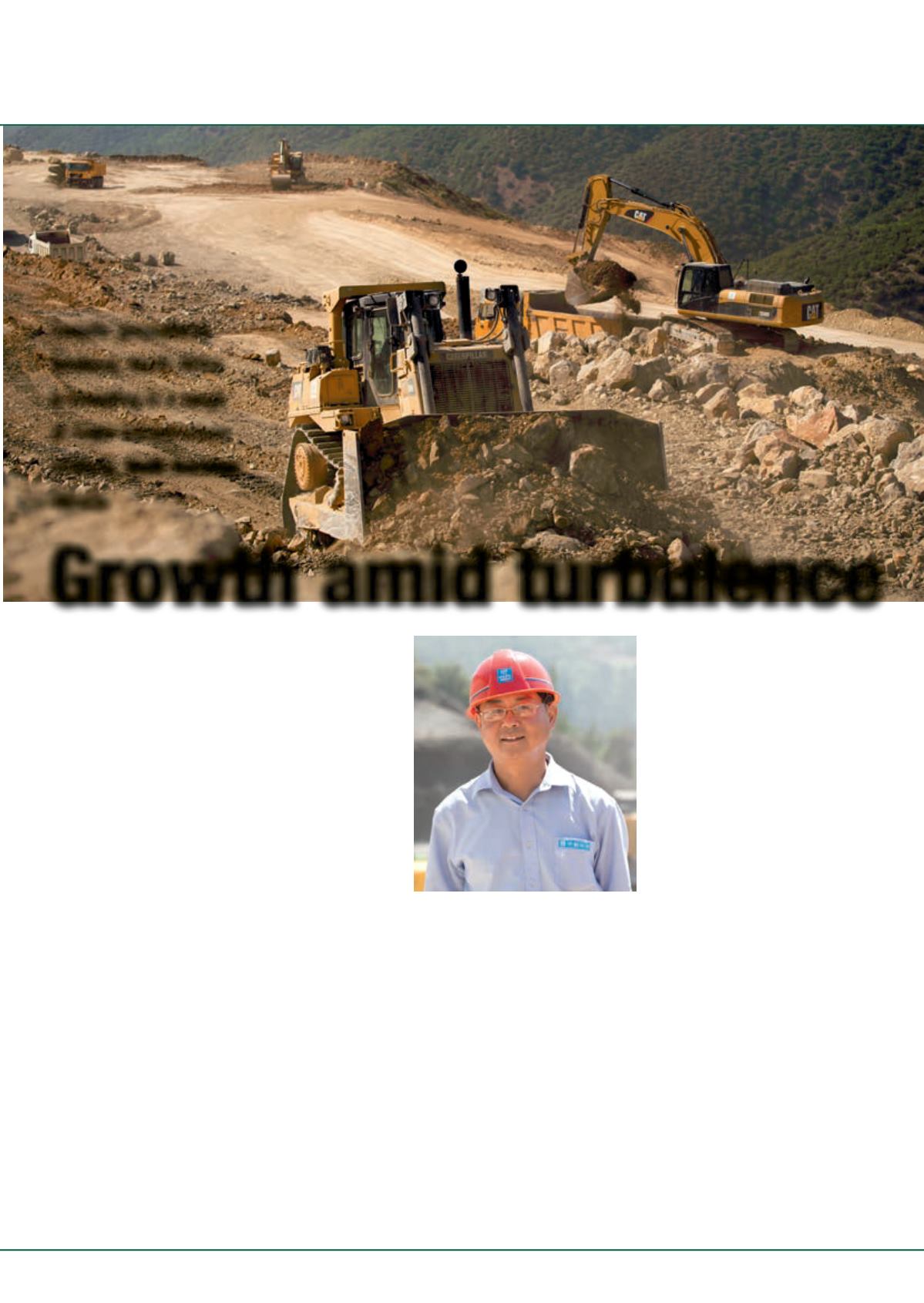
17
december 2014
international
construction
REGIONALREPORT
Growth amid turbulence
>
billion between 2010-14 to deliver new
road networks and other major civil
engineering projects.
This has included ongoing work on
a 3,000 km Trans Sahara Highway,
which has seen a number of companies
including Caterpillar play a role in
deliveringa53km sectionbetweenChiffa
andBerrouaghiawithinAlgeria.
The project, which began last year, is
due for completion in 2017 and has seen
China State Construction Engineering
Corporation (CSCEC) selected for
delivery of the scheme.
Caterpillar’s regional sales manager
Adrian Grigorita appeared equally
buoyant about prospects for the region, despite its sporadic
pattern of investment.
He said, “There’s awillingnesswithinAlgeria for the continued
pace of growth there, whichhas been the case for about seven or
eight years.The constructionmarket inNorth Africa is actually
quite sophisticated –with it being close to Europe, it has access
to a lot of the same technical support.
“We have seen that the demand for excavators has increasedby
around +10% to +12% in the region with our 320D 20-tonne
model having been specially developed for North Africa. Our
950wheeled loader has also beenpopular.”
According to the senior salesmanager, oneof itsmost successful
breakthroughs had been the introduction of its grade control
system that improves efficiency of on-site equipment through
electronicmachine control.
In terms of Caterpillar’s most pressing challenges, he said the
drive towards more environmentally-conscious equipment with
tighter emissions controls would represent a challenge for many
contractors within the region.
P
olitical tensions are still high in parts of North Africa
including Libya and Egypt, and that is a problem
for construction investment. Despite that, there are
notable schemes under way that are set to improve the region’s
infrastructure and its ability to trade on an international level.
Among the largest of these is the expansion of Suez Canal
announced in August, which will increase capacity on this key
trade route. The first contracts for construction of the new
channel were awarded inOctober.
There has also been support from the Islamic Development
Bank in terms of providing finance for ventures including a new
phase of the SharmEl-Sheikh international airport inEgypt.
Elsewhere, schemes such as a new multi-billion Dollar high
speed rail link for Morocco, the 1,700km Ras Ejdyer coastal
highway in Libya and the long-planned Rades power station
in Tunisia that is being financed by the Japanese International
CooperationAgency–areall schemesdemonstratinggovernment
confidence indeveloping core infrastructure.
According to this year’s African Economic Outlook report
backed by the United Nations and the African Development
Bank, 2014will see the continent’s economic growthhit +4.8%.
Its forecast figures of +5% growth in 2015 are the strongest
seen since the economic crisis in 2009. According to the
study’s results, the region’s development has been driven by a
combination of domestic demand, infrastructure development
and an increase in international trade.
Despite the report’s positive tone, it highlighted anurgent need
to boost levels of high-value export goods if Africa's economies
are to deliver sustained long-term growth.
One country that has shown particularly strong performance
within the construction sector has been Algeria. Revenues
from its gas reserves have enabled considerable infrastructure
development over recent years.
According to research group Timetric, the country’s fortunes
have improved with government investment of US$ 286
Despite geopolitical
tensions, NorthAfrica
is investing in a range
ofmajor infrastructure
projects.
Neill Barston
reports.
Growth amid turbulence
Caterpillar’s equipment at
work on the Trans Sahara
Highway in Algeria.
Caterpillar’s Zhu
Jihon, parts and
supplymanager
for its Algeria
highway project
said contractors
BMAlgeria “have
given very good
support” for the
scheme.


